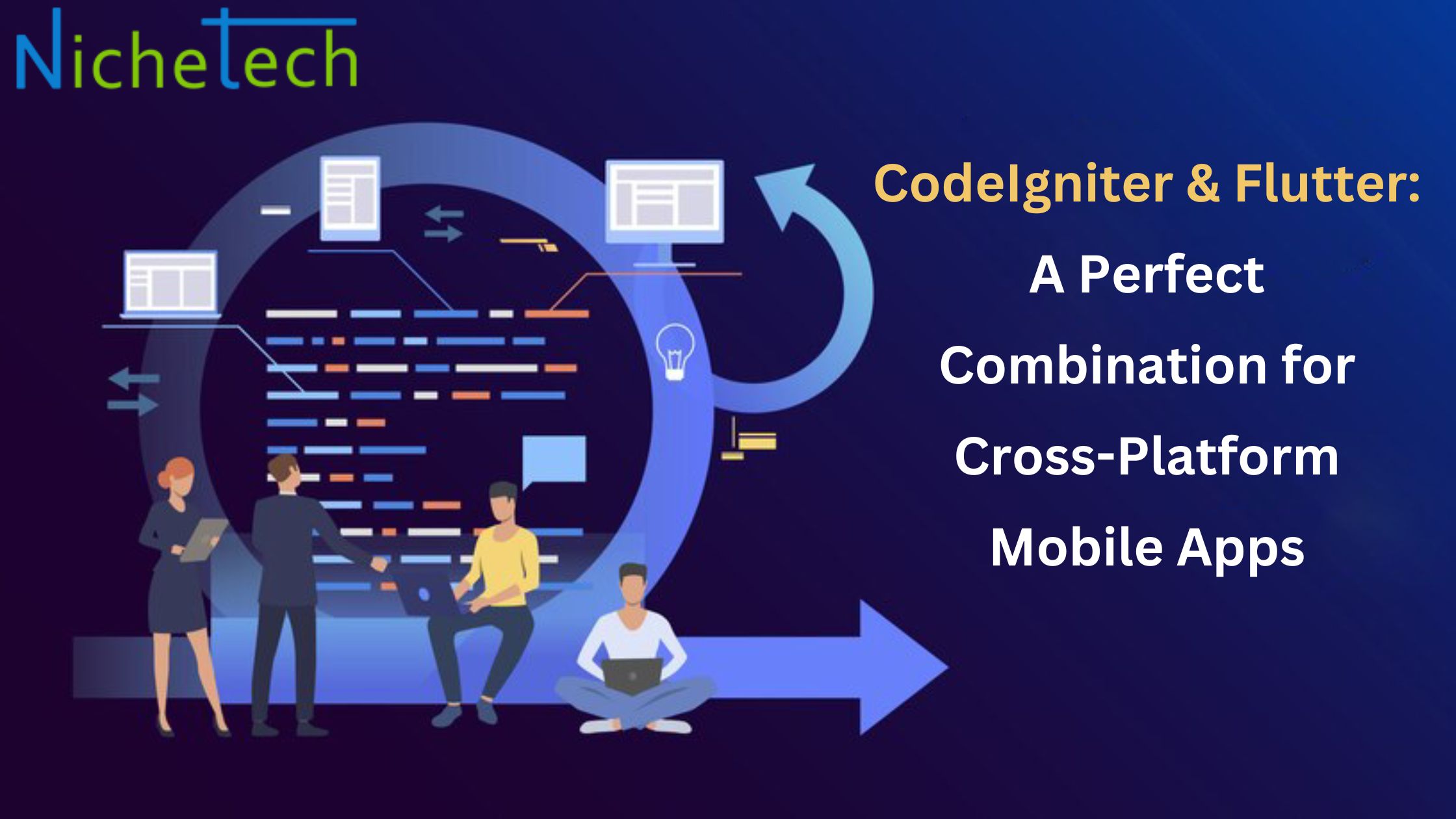In the fast-evolving world of mobile app development, choosing the right technologies can significantly impact the success of your project. Combining CodeIgniter, a robust PHP framework, with Flutter, Google’s open-source UI software development kit, creates a powerful synergy for building cross-platform mobile applications.
This blog explores how these two technologies complement each other and why they are a perfect combination for developing dynamic, efficient, and high-performing mobile apps.
What is CodeIgniter?
CodeIgniter is a lightweight PHP framework known for its simplicity, speed, and flexibility. It’s designed to enable developers to create full-featured web applications with a minimal amount of code. CodeIgniter provides a rich set of libraries for common tasks and a simple interface and logical structure to access these libraries.
Key Features of CodeIgniter
-
MVC Architecture: CodeIgniter follows the Model-View-Controller (MVC) architectural pattern, which separates the logic, presentation, and data layers, making it easier to manage and scale your application.
-
Lightweight and Fast: CodeIgniter is known for its small footprint and exceptional performance, making it an ideal choice for developers who need a fast framework without the bloat.
-
Flexible and Secure: With built-in security tools and flexible configuration, CodeIgniter allows developers to build secure and customized applications efficiently.
What is Flutter?
Flutter is an open-source UI toolkit created by Google for building natively compiled applications for mobile, web, and desktop from a single codebase. Flutter uses Dart as its programming language and provides a rich set of pre-designed widgets that enable developers to create beautiful and highly responsive user interfaces.
Key Features of Flutter
Cross-Platform Development: Write once, run anywhere. Flutter allows developers to create apps for both iOS and Android using a single codebase, significantly reducing development time and effort.
Fast Development: With features like Hot Reload, developers can see the results of their changes almost instantly, making the development process more efficient and enjoyable.
Rich Widgets: Flutter provides a comprehensive set of customizable widgets, making it easy to create complex UIs that deliver a native performance and look.
Strong Community and Support: As an open-source project backed by Google, Flutter has a growing and active community, providing plenty of resources, plugins, and tools to support developers.
Why Combine CodeIgniter and Flutter?
Efficient Backend with CodeIgniter
Using CodeIgniter for the backend of your mobile app ensures that you have a fast, secure, and efficient server-side framework to handle your application’s data and business logic. CodeIgniter’s lightweight nature means your backend can perform well even under heavy load, and its MVC architecture helps in maintaining a clean and manageable codebase.
Dynamic Frontend with Flutter
Flutter’s ability to build natively compiled applications from a single codebase makes it an excellent choice for the frontend. The rich set of widgets and the fast development cycle mean that you can create a dynamic and responsive user interface that works seamlessly on both iOS and Android devices.
Seamless Integration
CodeIgniter and Flutter can be integrated seamlessly to create a powerful full-stack solution. CodeIgniter can handle the backend operations such as API development, data processing, and server-side logic, while Flutter can manage the frontend, providing a smooth and engaging user experience. RESTful APIs created with CodeIgniter can be easily consumed by Flutter applications, ensuring efficient communication between the client and server.
Building a Mobile App with CodeIgniter and Flutter
Step 1: Set Up the Backend with CodeIgniter
Install CodeIgniter: Download and set up CodeIgniter on your server or local environment.
Create APIs: Develop RESTful APIs for your mobile app to handle data operations such as CRUD (Create, Read, Update, Delete) actions.
Implement Security: Use CodeIgniter’s built-in security features to protect your APIs from common threats like SQL injection and cross-site scripting (XSS).
Step 2: Develop the Frontend with Flutter
Install Flutter: Set up Flutter SDK on your development machine.
Create a New Project: Use the Flutter CLI to create a new project.
Design the UI: Utilize Flutter’s rich set of widgets to design and build the user interface of your mobile app.
Integrate with CodeIgniter: Use HTTP requests in Flutter to interact with the APIs created with CodeIgniter. Handle data fetching, submission, and display within your Flutter app.
Step 3: Testing and Deployment
Testing: Perform thorough testing of both the backend and frontend. Ensure the APIs are secure and the app works smoothly on both iOS and Android devices.
Deployment: Deploy the CodeIgniter backend on a live server and publish the Flutter app to the App Store and Google Play Store.
Conclusion
Combining CodeIgniter and Flutter provides a robust, efficient, and scalable solution for building cross-platform mobil applications. CodeIgniter’s powerful backend capabilities paired with Flutter’s rich and responsive UI toolkit create a perfect blend for modern app development. By leveraging the strengths of both frameworks, developers can deliver high-quality mobile apps that meet the demands of today’s fast-paced digital world.
Whether you are a seasoned developer or just starting, exploring the synergy between CodeIgniter and Flutter can open up new possibilities for your next mobile app project. Happy coding!







